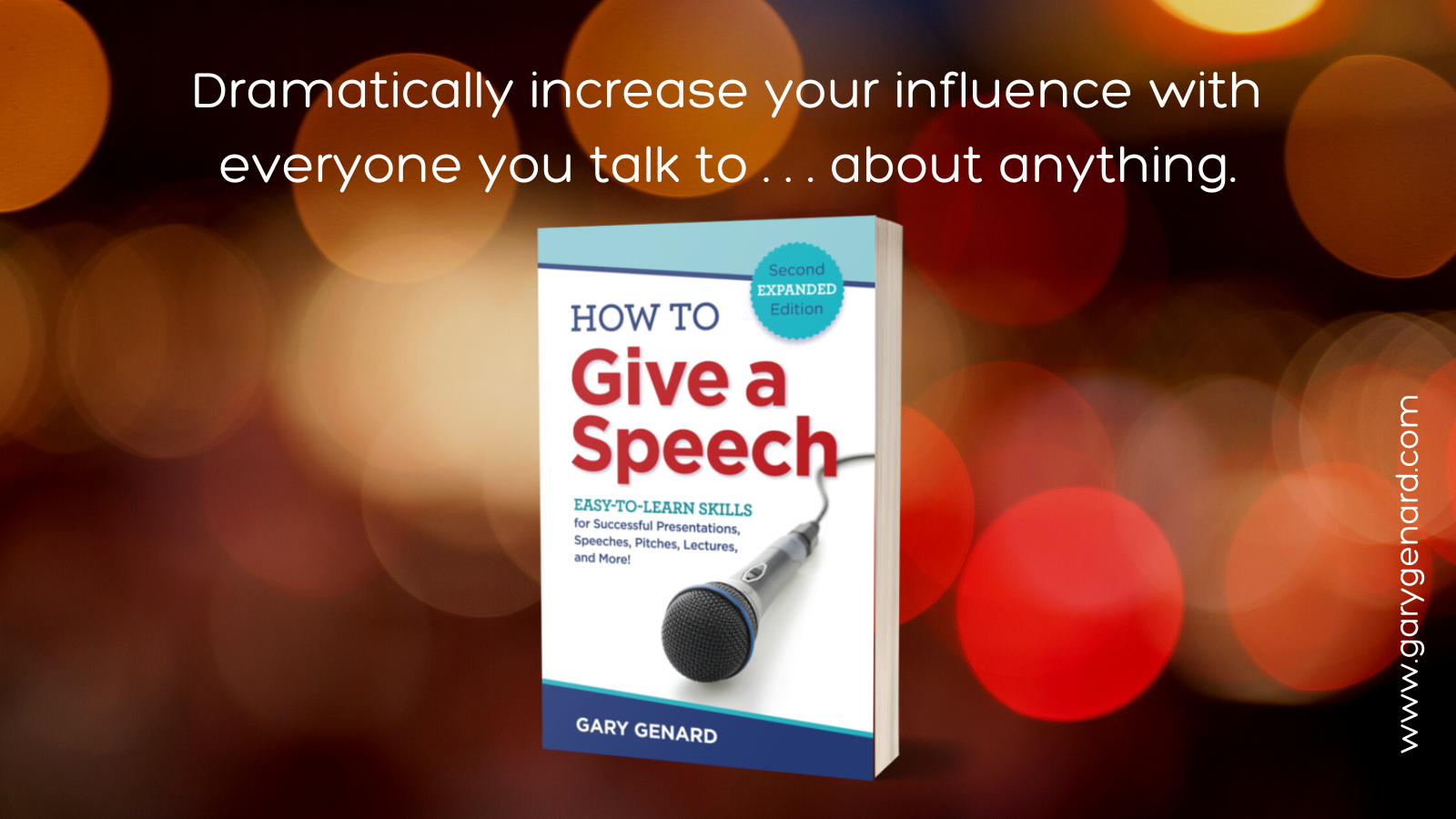Facing tough questions or pushback in a speech or presentation? Here's how to survive Q & A—and even make your message stronger!
Some of us love Q & A. At long last, we feel, our endless monologue is over, and we can have a conversation with the audience. Others dread the question-and-answer session because they don't know what's coming their way.
Whichever camp you hang out in, there's a skill that you almost certainly can get better at. That's handling yourself when questions you find difficult—or that you were hoping you would never be asked—are served up to you on a very public platter.
Want to show what you're made of? Learn how to handle yourself in Q & A! It's a key skill of leadership. Learn more in my book, Speak for Leadership. Get it here on Amazon!
Why Questions and Pushback Are Good Signs
Here's some good news, though, which experienced salespeople understand (and so should you). Questions, and even complaints, are a sign that your listeners are still interested.
Challenges like this are, without doubt, a continuation of the "sales" process. If your listener or audience wasn't interested any longer in what you're saying, they'd just shut off. What's the point of asking a question or complaining if you've already decided you don't care and you just want to go home to watch Netflix?
Learn the best practices of successful presentations. Download my Free Presenter's Guide, Six Rules of Effective Public Speaking. Add it to your speaker's toolkit today!
As the speaker, you've just been given an opportunity to keep the conversation going . . . so embrace it. Here's something just as good: the challenge or even attack that everyone in the audience recognizes for what it is, is your chance to not only survive, but to strengthen your position. You can now bring your message home one more time—perhaps even stronger than you did the first time. If you believe that (and you should), I've got a bridge to sell you.
No, really! Keep reading!
Want more? See Chapter 14, "Handling Q & A Like a Pro," in my book, How to Give a Speech. You'll find 101 easy-to-learn skills for successful presentations. Find it on Amazon.
The Key Concept of 'Bridging'
Have you heard this term? It means taking a question or challenge you find difficult, and turning it to your advantage. Think of it this way: what you need to do is get out of the boggy, swampy ground of a tough question, and move to the solid ground of what you want to say on this topic.
In other words, it's very much using the opportunity to make the points you came here to get across anyway. If that sounds like speaking strategically, well, that's exactly right.
Discover how to craft successful presentations. Download my Free White Paper, 7 Key Components of Successful Presentations. Put together winning presentations every time!
Whenever I think of bridging, it brings to mind the twelve years I spent training diplomats at the U.S. State Department (and similar training I conduct at the United Nations and permanent missions to the U.N.). Diplomats constantly face questions and challenges embodying the most complex explanations imaginable. Yet, the good ones do it smoothly and effectively.
How? They bridge. The key is remembering that anything you say in a presentation, press conference, panel discussion, etc., needs to be what you came there to say. That's entirely strategic, and it's what you should always be thinking when it comes to making your points. It doesn't matter what the questioner wants, or how he or she wants to look good or score points at your expense. If you buy into that set-up, you're a dead duck (oops! your feathers just got dragged down into the quicksand of the bog!).
Instead, use the question to pivot to one of your main points (again, one of the things you came here to say about this topic). It might sound like this: "That's an important point and I'm glad you brought it up. It's a reminder that the fundamental issue here is [YOUR MAIN ASSERTION]. That's why it's so important [DETAILING YOUR POSITION AGAIN, ETC.]
Now you're getting better at handling challenges! Learn more on staying calm, focused, and persuasive. Grab my Free cheat sheet, "7 Tips for Overcoming Audience Resistance."
Two further points on bridging: First: The faster and more efficiently you do it, the less time you spend in the swamp (which will always be obvious to listeners). Second, and I'm sorry to have to tell you this, but the best way to see this technique used effectively is by listening to politicians.
Okay, one more point, because I'd hate to leave you with that last one. Practice giving your key message(s) using different words. That is, make the same point, but say it slightly differently. This will keep the audience from thinking you're just avoiding the question each time. I sometimes give clients this assignment: decide on your message. Now, write three different ways to say that. Now write three more. Now write three more. You now have nine different ways to make your point so it doesn't sound like your needle is stuck.
You should follow me on Twitter here.

Gary Genard is an actor, author, and expert in public speaking and overcoming speaking fear. His company, The Genard Method offers live 1:1 Zoom executive coaching and corporate group training worldwide. In 2022 for the ninth consecutive year, Gary has been ranked by Global Gurus as One of the World’s Top 30 Communication Professionals. He is the author of the Amazon Best-Seller How to Give a Speech. His second book, Fearless Speaking, was named in 2019 as "One of the 100 Best Confidence Books of All Time." His handbook for presenting in videoconferences, Speaking Virtually offers strategies and tools for developing virtual presence in online meetings. His latest book is Speak for Leadership: An Executive Speech Coach's Secrets for Developing Leadership Presence. Contact Gary here.
Chess photo credit: Vlada Karpovich on pexels.com.





